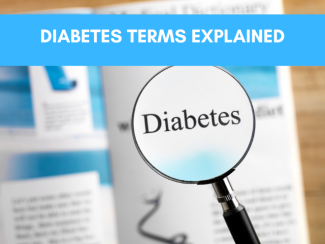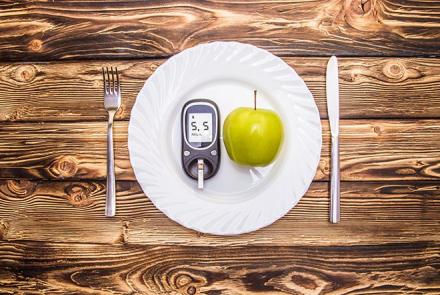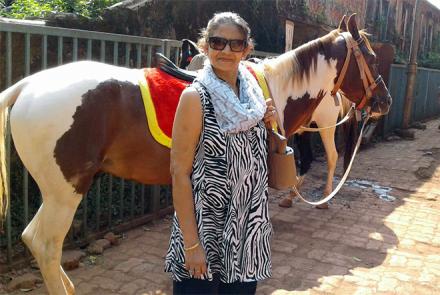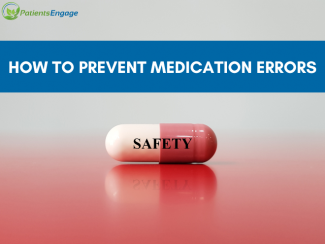
As you learn to navigate and manage diabetes, you will come across new terms. PatientsEngage has compiled an easy reckoner in alphabetical order to help you understand the terms associated with diabetes.
If you don't find the term you are looking for, please you leave a comment below or send us a note through contact us and we will update this content.
Beta cells
Beta cells are found in the pancreas, as part of clusters called islets. They are responsible for making, storing and releasing the hormone insulin.
Blood glucose level
This is the amount of concentrated glucose that is circulating in the body. This level is closely maintained by the body. Glucose levels are measured in a range because it can fluctuation slightly. Normal range for a non-diabetic is between 70-130mg/dL. Normal range for a Diabetic according to the American Diabetes Association should be 90-130 mg/dL before meals.
Cardiovascular Diseases (CVD)
Cardiovascular diseases has a close association with Diabetes. Overtime, high sugar levels affect the blood and nerve vessels of the heart and increase the probability of heart diseases and stroke. CVD is the number one cause of morbidity for diabetes patients.
CGM or Continuous Glucose Monitoring
CGM is a device that measure the glucoses levels of a person for 24 hours of the day. It is a tiny sensor that is inserted in the arm or the belly and relays real time readings to the phone. This is helpful tool to better track one’s glucose levels through the day and identify factors that affect it.
Diabetic Coma
When blood glucose levels become very high or very low, a serious life threatening condition called Diabetic coma can occur. This is a medical emergency but patients can recovery if treated promptly.
Diabetic Encephalopathy
When diabetes affects the Central Nervous system (CNS), it can lead to a cognitive and motor impairment. This is a chronic microvascular complication of long-term diabetes.
Diabetic foot
Foot is frequently affected in diabetic patients as blood and nerve vessel become contracted. Neuropathy plays a big role and can lead to numbness, pain, tinglng and lack of sensation in the feet leading to infections, injury, ulceration and death of tissues over time.
Diabetic Ketoacidosis (DKA)
In the absence of insulin, the body breaks down fat and produces ketones. The increase of ketones in the body causes the body to become acidic, this state is called Diabetic Ketoacidosis. This is a life-threatening state and should be treated immediately. Diabetics should be aware of the signs and symptoms of DKA.
Diabetic Nephropathy
Diabetes makes the kidneys filter too much blood, thus overworking them. Over time, the filtration system becomes inefficient, waste products build up and the kidney starts leaking small amounts of protein into the urine. The presence of protein in urine is termed microalbuminuria, which is a bad sign. Approximately 20-30 per cent of Types 1 and 2 diabetics develop nephropathy or diseased kidney.
Diabetic Neuropathy
Diabetic Neuropathy is a type of nerve damage that can occur if you have diabetes. It can affect different parts of the body. There are 4 types of nerve damage: peripheral, autonomic, proximal and focal.
Diabetic Periodontitis/Gingivitis
Uncontrolled diabetes can cause several gum diseases including periodontitis, and gingivitis or infection of the gums. Diabetes affects the blood flow to the gums and bones , thereby causeing weak and unnourished gums making them more susceptible to infections, damage and fall.
Diabetic Retinopathy
Diabetic retinopathy refers to all disorders of the retina caused by diabetes. Diabetic eye disease is a spectrum of eye diseases – retinopathy, cataract, glaucoma - caused by diabetes.
Fasting blood glucose
This is a blood test that is done first thing in the morning. You have to fast for eight hours before the test but are permitted to drink water. According to American Diabetes Association, results are indictive as seen below.
|
Result |
Fasting Plasma Glucose (FPG) |
|
Normal |
less than 100 mg/dl |
|
Prediabetes |
100 mg/dl to 125 mg/dl |
Gangrene
This is basically death of tissue which occurs due to lack of blood flow or severe illness, injury or infection. It commonly affects the extremities such as fingers, toes, arms, feet etc but can affect internal organs too. Diabetics are more prone to gangrene is there glucose levels are not controlled and are affect nerve and blood supply to parts of the body.
Gestational Diabetes
Two to ten per cent of pregnant women develop diabetes during pregnancy. This is called gestational diabetes. This causes health problems for both the mother and the child during the pregnancy and after.
Glucose
It is the main type of sugar found in our blood. It is primarily got from the food we eat and provides the key source of energy and fuel for our cells.
Glucometer
A glucometer also known as a blood glucose meter is a small electronic device that measures the blood glucose levels. It is useful for all diabetic patients in monitoring and keeping track of their glucose readings.
Glycogen
Excess glucose is stored on our liver and muscles. This stored form of glucose is called glycogen.
HbA1c
This test measures your average blood glucose levels over the last two to three months. According to American Diabetes Association, results are indictive as seen below.
|
Result |
A1C |
|
Normal |
less than 5.7% |
|
Prediabetes |
5.7% to 6.4% |
|
Diabetes |
6.5% or higher |
Hyperglycemia
Hyperglycemia is increased blood sugar in the body above the normal range. This happens when the insulin is not enough in the body or body cannot use it.
Hyperosmolar Hyperglycaemic State (HHS)
When blood glucose levels remain very high for a long time, it can lead to the Hyperosmolar Hyperglycaemic State. Severe dehydration is seen along with confusion, hallucinations, blurry vision and weakness or paralysis on one side of the body. Immediate water and IV fluids should be administered along with insulin to the patient.
Hypoglycemia
Hypoglycemia is drop of blood glucose levels below the normal range. Symptoms include sweating, palpitations, trembling, increased respiratory rate etc.
Insulin
It is a hormone produced by the Beta cells of our pancreas. It is responsible for regulating and using the glucose circulating in the body.
Insulin resistance
Insulin resistance, where the body is unable to use the body insulin effectively thereby causing increase in the blood sugar levels.
Ketones
Are chemical made by the liver when fat is broken down. Normally, the body uses insulin to metabolise the glucose in the body, but if insulin is unavailable, the body will start breaking down the fat for energy, thereby producing ketones.
Lipohypertrophy
When repeated injections are given at the same site, there is fat buildup which is known as Lipohypertrophy. This is often seen in diabetic patients who take insulin injections. Avoiding injecting at the site can lead to reversal of this condition.
Monogenic Diabetes
This is a rare form of Diabetes that occurs due to mutation in a single gene. It accounts for 1-4% of all diabetes. Neonatal diabetes mellitus (NDM) and maturity-onset diabetes of the young (MODY) are the two main types seen.
Oral Glucose Tolerance Test
This checks the blood glucose level before and two hours after drinking a sweet drink. This test shows how the how your body is processing glucose. According to American Diabetes Association, results are indictive as seen below.
|
Result |
Oral Glucose Tolerance Test (OGTT) |
|
Normal |
less than 140 mg/dl |
|
Prediabetes |
140 to 199 mg/dl |
|
Diabetes |
200 mg/dl or higher |
Pancreas
Pancreas is an organ or gland located in the left upper abdomen behind the stomach. It has two main functions i.e. to secrete enzymes for breaking down food and to release hormones for controlling the glucose levels in the body.
Pre-diabetes
is when your blood glucose levels are higher than normal but not high enough to be diabetes. Simply put, prediabetes puts you at risk of developing diabetes unless you change your lifestyle and bring down the amount of glucose in your blood.
Time in Range (TIR)
This is the amount of time a diabetic person spends in the normal glucose range (i.e 70-180mg/dL). It is measured as a percentage. A TIR of 70% is recommended for people with Diabetes, which would mean that 17 hours of their day is within the normal range. This is a great measurement to keep your glucose levels withing control, especially when used with a CGM.
Type 1 Diabetes
This is a chronic condition, usually diagnosed in childhood or adolescence in which the body produces little or no insulin. This type of diabetes accounts for about 5% of all diagnosed diabetic cases.
Type 2 Diabetes
is the more common form of diabetes, accounting for about 95% of those diagnosed. In Type 2 diabetes, the pancreas produces insulin but, for unknown reasons, the body cannot effectively use it.
References:
American Diabetes Association: www.diabetes.org













